#ShivaSutras
Explore tagged Tumblr posts
Text
Kashmiri Shaivism and the Art of Living Without Boundaries

Breaking the Illusion of Borders: The Vision of Vasugupta
Imagine living a life where no limitation exists—not in your thoughts, actions, or identity. In the 9th century, Vasugupta, the great sage of Kashmiri Shaivism, introduced the world to this infinite vision of freedom through the Shiva Sutras. His message was simple yet profound: You are already boundless; the limitations you perceive are illusions of the mind.
Kashmiri Shaivism is not just a doctrine; it is an experience. It is not about renouncing the world, but about dissolving the mental walls that keep us from realizing our boundless nature. Vasugupta did not ask his followers to break societal norms but instead dissolve the inner barriers they had built within themselves. This is the art of living without boundaries—living in unison with the infinite field of consciousness that permeates everything.
Understanding Boundaries: The False Constructs
Why do we feel limited? Vasugupta would say it is because of Avidya—the ignorance of our true nature. We believe we are separate from the world, from others, and from the divine. This separateness creates boundaries—emotional, physical, and mental.
When you say: I can’t do this, I don’t belong here, This is not for me, you are creating inner boundaries. According to Kashmiri Shaivism, these boundaries do not exist in reality; they are mere projections of the limited mind.
The Boundless State: Embracing Oneness
The core teaching of Vasugupta's Shiva Sutras is that we are already free, but we have hypnotized ourselves into believing otherwise. He emphasized that the mind is like a cloud covering the vast sky of consciousness. Once the cloud dissolves, the sky remains, infinite and unbound.
To live without boundaries means to:
Dissolve the Ego: Stop identifying yourself with your profession, social status, or body. You are a cosmic force experiencing life through a physical form.
Transcend Labels: Quit defining yourself with societal labels like rich, poor, successful, or unsuccessful. Labels are boundaries that trap you.
Eliminate Fear: Fear is a boundary. Fear of failure, rejection, or loss creates invisible walls around your potential.
Experience Unity: See everything as an extension of yourself. This is the highest realization of Kashmiri Shaivism—Shivoham (I am Shiva).
The Daily Practice: Dissolving Boundaries
Here’s a practical toolkit to help you live without boundaries, as taught by Vasugupta:
1. The Mirror Practice:
Stand before a mirror and look deeply into your own eyes.
Whisper, I am not this body; I am the boundless consciousness.
Do this for five minutes daily and observe how it shifts your perception.
2. The Boundary Journal:
Every evening, write down one belief that limits you.
Example: I am not capable of starting my own business.
Rewrite it as: I am limitless; my potential is infinite.
Over time, you will dissolve self-imposed boundaries.
3. The Shiva Mudra Meditation:
Sit in a meditative posture and bring your hands into Shiva Mudra (right palm on left palm, placed on your lap).
Close your eyes and chant Shivoham (I am Shiva) for 15 minutes.
Visualize your boundaries dissolving and yourself expanding into infinity.
4. Dissolve Labels in Conversations:
Stop labelling people or situations as good, bad, rich, poor, successful, or unsuccessful.
Simply see everything as consciousness expressing itself in different forms.
This practice will train your mind to break the walls of duality.
5. Boundary-Free Action:
Pick one thing you’ve always felt limited in—like public speaking, networking, or starting a business.
Challenge yourself to do it without overthinking the limitations.
Observe how you slowly transcend your perceived boundaries.
Living the Vasugupta Way
Living without boundaries is not a mystical experience—it is the most natural state of being. We have simply forgotten it. Vasugupta’s Shiva Sutras were never about abandoning the world but about abandoning the false boundaries within us.
If you start practicing these principles, you’ll notice that your relationships become smoother, your fears reduce, and you begin to approach life with a boundless energy.
Vasugupta’s ultimate teaching is this: Freedom is not given to you; it is your nature. The walls you see around you are only built by your mind. Once you dissolve them, you will not only realize the divine within you—but you will also see the divine in everything and everyone.
This is the path of living without boundaries—the path of Shiva.
#KashmiriShaivism#VasuguptaWisdom#ShivaSutras#BoundlessLiving#SpiritualAwakening#HigherConsciousness#DissolveBoundaries#OnenessExperience#NonDuality#LiberateYourself#ShivaConsciousness#SpiritualFreedom#AwakenInnerPower#LiveWithoutLimits#KashmirMysticism
2 notes
·
View notes
Text
The Origin of Alphabets from Shiva Sutra Sounds: Exploring the Matrika Chakra
Introduction:Origin of Alphabets:
The origin of alphabets has always been a topic of fascination and intrigue for linguists, historians, and philosophers alike. From ancient civilizations like Egypt and Mesopotamia to the modern digital age, alphabets have been an essential part of human communication and expression. But have you ever wondered where these alphabets came from? What is their origin, and how did they evolve into the complex systems of writing and language that we use today? In this article, we will explore the fascinating origins of alphabets and their connection to the ancient Hindu texts, Puranas, and scripts. Shiva Sutras: The Shiva Sutras, also known as Maheshvara Sutras, are a set of 77 aphorisms that were first revealed to the great sage Vasugupta by Lord Shiva himself. These sutras are considered to be one of the most important texts of Kashmiri Shaivism, a school of thought that focuses on the worship of Shiva as the ultimate reality. The Shiva Sutras contain a profound insight into the nature of consciousness and the principles of spiritual practice. But what is less known is that the Shiva Sutras also contain the seed sounds of the Sanskrit language, which form the basis of the entire system of Indian alphabets. According to the ancient Hindu texts, the world was created through sound. The universe itself is said to be a manifestation of the primordial sound, OM, which represents the ultimate reality or Brahman. The sounds of the Sanskrit language are considered to be divine and have the power to create, sustain, and destroy the world. The Sanskrit alphabet, known as Devanagari, is said to have originated from the Shiva Sutras, which contain the seed sounds or bija mantras of the 50 letters of the Sanskrit alphabet. The bija mantras are the basic sounds or vibrations that form the building blocks of the universe. These sounds are said to have emerged from the cosmic nada, the primordial sound of creation, which is the sound of Lord Shiva's drum. The Shiva Sutras contain the 50 bija mantras that represent the basic sounds of the Sanskrit language. These mantras are the sounds of the Sanskrit consonants and vowels, which form the basis of the Sanskrit language. The 50 bija mantras of the Shiva Sutras are arranged in a specific order, which is called the matrika chakra. The matrika chakra is a circular arrangement of the bija mantras, which represents the cosmic manifestation of the universe. The matrika chakra is said to have originated from the cosmic sound of Lord Shiva's drum, which represents the primordial sound of creation. The matrika chakra consists of five groups of sounds, each containing ten bija mantras. The first group represents the five basic elements of the universe, which are earth, water, fire, air, and ether. The second group represents the five organs of perception, which are the eyes, ears, nose, tongue, and skin. The third group represents the five organs of action, which are the hands, feet, mouth, genitals, and anus. The fourth group represents the five states of consciousness, which are waking, dreaming, deep sleep, turiya (transcendental), and turiyatita (beyond transcendental). The fifth group represents the four levels of speech, which are para (ultimate), pashyanti (inner), madhyama (middle), and vaikhari (outer).
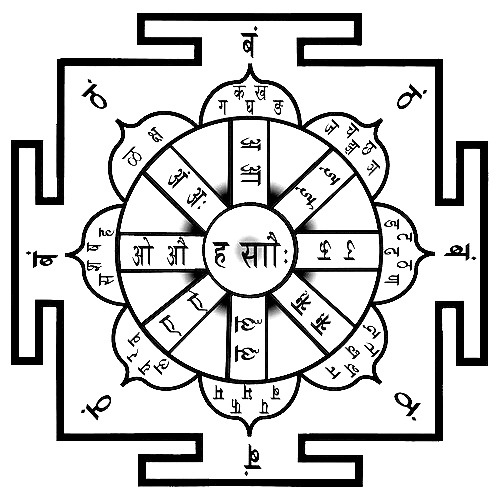
The matrika chakra is not just a system of sounds but also a system of knowledge. It represents the fundamental principles of the universe, which are also reflected in the human body and mind. The Shiva Sutras and the matrika chakra have been an important part of Hindu philosophy and spirituality for centuries. They teach us that everything in the universe is interconnected, and that by understanding the fundamental principles of the universe, we can better understand ourselves and our place in the world. In conclusion, the origin of alphabets from Shiva Sutra sounds is a fascinating concept that holds immense importance in the Hindu tradition. The sounds were considered divine, and they were believed to contain the essence of the universe. The Rishis recognized the potential of these sounds and used them to create a system of communication that has endured for thousands of years. The Shiva Sutras continue to inspire spiritual seekers, linguists, and scholars alike, and their relevance remains undiminished even in the modern age. Understanding the connection between these ancient sounds and the letters we use to communicate every day can help us appreciate the profound wisdom that underpins the Hindu tradition.
Conclusion:
It is essential to recognize the critical role of Shiva Sutras in the origin of alphabets and how they continue to influence language and communication. The study of Sanskrit, in particular, can help deepen our understanding of this connection and provide us with a window into the rich cultural heritage of India. By recognizing the importance of the sounds that gave birth to our letters, we can learn to appreciate the beauty and depth of the Hindu tradition. References: - Vasugupta, Kshemaraja, Jaideva Singh, and Paul E. Muller-Ortega. Shiva Sutras: The Supreme Awakening. Motilal Banarsidass Publ., 2008. - Saraswati, Swami Satyananda. Shiva Sutras: The Yoga of Supreme Identity. Bihar School of Yoga, 2012. - Ranganath, B. G. V. Indian Writing in English. Atlantic Publishers & Dist, 2007. - Gupta, Shailendra K. The Origin of Language: A Scientific Approach. Academic Press, 2010. - Deussen, Paul. The Philosophy of the Upanishads. Courier Corporation, 2013. - Baskaran, S. The Book of Indian Scripts: A Brief History of Writing in India. New Delhi: National Book Trust, India, 2004. - Pingree, David. The Yavanajātaka of Sphujidhvaja. Cambridge, MA: Harvard University Press, 1978. - Chatterjee, S. K. The Origin and Development of the Bengali Language. Calcutta: Firma K. L. Mukhopadhyay, 1970. - Apte, Vaman Shivaram. The Practical Sanskrit-English Dictionary. Delhi: Motilal Banarsidass, 1993. - Macdonell, Arthur Anthony. A Sanskrit Grammar for Students. Oxford: Clarendon Press, 1916. Read the full article
#AdikkaChannels#AdikkaChannelsblog#Alphabets#brahmadeity#consciousness#Hindumythology#Hinduphilosophy#lordshivagod#MatrikaChakra#shivagod#ShivaSutras#SoundVibration#spirituality
0 notes
Text
The Independent State of Supreme Consciousness is the Reality of Everything - 1st Awakening
The Independent State of Supreme Consciousness is the Reality of Everything – 1st Awakening
Caitanyamatma – The Independent State of Supreme Consciousness is the Reality of Everything – 1st Awakening – Shiva Sutras * The Shiva Sutras were delivered by the Lord Himself written on a rock edifice at the foot of the Mahadeva Mountain in the valley of Harvan in Kashmir to the great master, Vasugupta
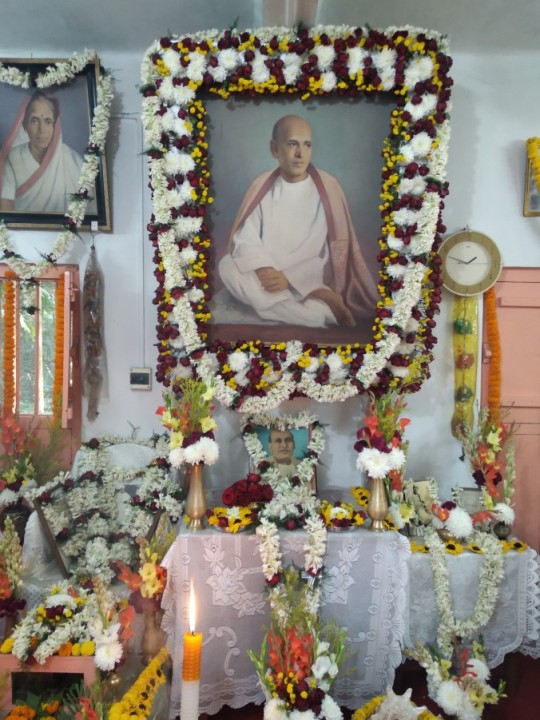
Yogishwar Sri Kalipada Guha Roy 9th Dec 2018, Taragunia
In a state of pure bliss

Sri M…
View On WordPress
#Finland#kashmirsaivism#Maha-AvatarBabaji#Mahadevamountains#shivasutras#SriM#swamylaksmanjoo#Vasugupta#Consciousness#shiva#Shiva Sutras. Kashmir
0 notes
Photo
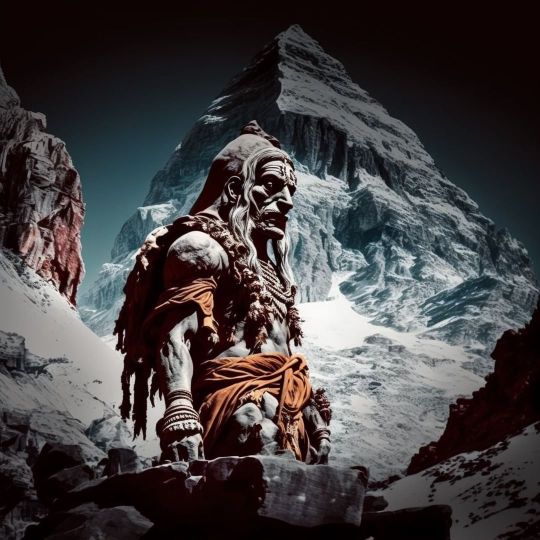
तेरे कैलशों का अंत ना पाया तेरे कैलशों का अंत ना पाया अंत बे-अंत तेरी माया ओह भोले बाबा अंत बे-अंत तेरी माया| #ShivaTheDestroyer#HinduDeity#ShivaShakti#LordShiva#ShivaLingam#ShivaSutra#ShivaTattoo#ShivaArt#ShivaMeditation#ShivaMantra#ShivaYoga#ShivaTemple#ShivaFestival#ShivaPuja#ShivaMythology#ShivaInHinduism #ShivaAndParvati#ShivaAndGanga#ShivaAndDurga#ShivaAndHanuman#ShivaAndLakshmi#ShivaAndVishnu#ShivaAndKali#ShivaAndBrahma#ShivaAndRudra#ShivaAndGanesha#ShivaAndNataraja#ShivaAndSaraswati#ShivaAndAgastya#ShivaAndAshtamurti (at India) https://www.instagram.com/p/CmyoU9qSVbG/?igshid=NGJjMDIxMWI=
#shivathedestroyer#hindudeity#shivashakti#lordshiva#shivalingam#shivasutra#shivatattoo#shivaart#shivameditation#shivamantra#shivayoga#shivatemple#shivafestival#shivapuja#shivamythology#shivainhinduism#shivaandparvati#shivaandganga#shivaanddurga#shivaandhanuman#shivaandlakshmi#shivaandvishnu#shivaandkali#shivaandbrahma#shivaandrudra#shivaandganesha#shivaandnataraja#shivaandsaraswati#shivaandagastya#shivaandashtamurti
1 note
·
View note
Photo
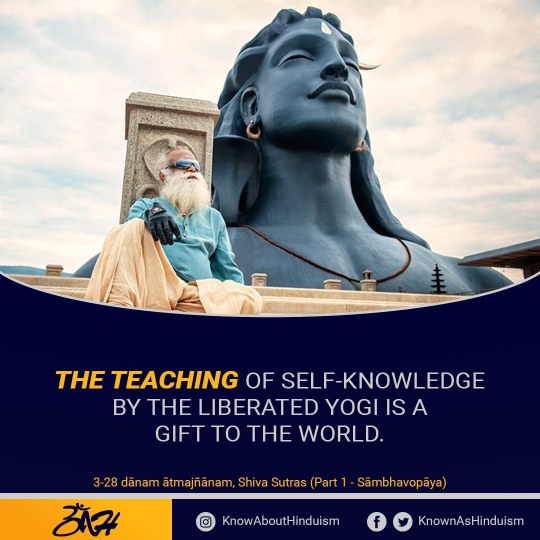
#ShivaSutras, The Aphorisms of #Shiva #KnowAboutHinduism #Knowledge #Yogi #Adiyogi #Speech https://instagr.am/p/Cb9L6lXKzDH/
0 notes
Text
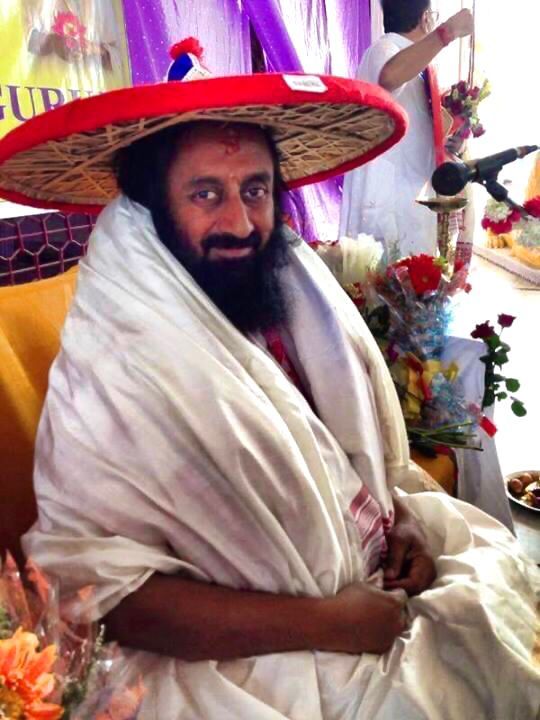
*Guru Gyan:* _(Shiv Sutra_6.1)_ भूतसन्धान भूतपृथक्त्व विश्वसंघट्टाः। ये जो सारा संसार है वह वस्तुओं का मिलन और उनके अलग करने से हुवा है। पांचो तत्वों क��� मिलन और अलग होने से यह सारा संसार बना हुवा है...यह विज्ञान का मूल सूत्र है। ये विश्वास की नहीं पर विज्ञान की बात है। विश्वास का अर्थ यह है कि पहले सिद्धांत को मान लो उसके बाद उसे जानने की चेष्टा करो। पर विज्ञान यह है कि पहले जान लो फिर उसे मान लो। शिवसूत्र कहता है कि वैज्ञानिक दृष्टिकोण से देखो। अध्यात्म और विज्ञान कभी भी विरोध मे नहीं थे इस देश मे। यहाँ जितनी भी अध्यात्म और विज्ञान की चीजें रही वो सब विश्वास की नहीं बल्कि विज्ञान की बात रही... इसको जानो, परखो, खुद अनुभव करो....जबतक खुद अनुभव नहीं करते हो तबतक मानो भी नही, ये भी बोला गया है। _(Shiv Sutra_6.1)_ Bhootandhan Bhoothapakatva Vishvasaghatta. The whole world is evolved from the mixture and separation of things. The whole world has been created by the union and separation of the five elements ... This is the basic formula of science. It is not a matter of faith but of science. The meaning of faith is to obey the first principle and then try to know it. But the science is to know first and then accept it. Shivasutra says that look from a scientific point of view. Spirituality and science were never in protest in this country. All the things of spirituality and science that have been here are not about faith but science… know it, test it, experience it yourself… Unless you feel it yourself, do not believe it, it has also been spoken .
0 notes
Text
*SANSKRIT:MOTHER OF LANGUAGES:
FEATURES:
👉Mother of All Indo-European Languages
👉Languages that share same roots of Sanskrit
1.Avestan of Ancient Persia.
2.Ancient Greek of Greece
3.Old Lation of Italy
4.Lithuania Baltic Languages
We discuss three main chapters:
1.History of Language.
2.Sanskrutum&Computing
3.Why Learn Sanskrutum
In the next sessions....🕉️
___________________________________
#natrajan#mother#janani#bhasha#oldest#lithuanian#agni#deva#mrityu#dina#danta#ugnis#dievas#mirtis#diena#dantis#PananiMaharashi#shivasutras#astadhyayi#@kuldeep.pai
#@isha.foundation#@sourabhraaj.jain#@projectshivoham#@projectnightfall
Please LIKE♥️,SHARE🙏&COMMENT👍ON MY POSTS.
0 notes
Photo

Guardare oltre le nuvole per sentire l'eternita' - #shivasutra #clouds #lookingat #eternity #sky #wide #highway #travel
0 notes
Photo

#ShivaSutras is a #religion book by #SwamiSukhabodhananda. #TheShivaSutra enhances one’s #awareness in a way one sees an #opportunity in a #difficulty and not a difficulty in an #opportunity. To #harmonize all of them is a #great #awakening. #Ability is an #important #tool in #life. #Ability without commitment and #awareness is like a #vehicle without the #engine. Buy Book @ http://imusti.com/books/book/11535356/Shiva-Sutras
0 notes
Text
One with the Universe: Kashmiri Shaivism’s Path to the Absolute
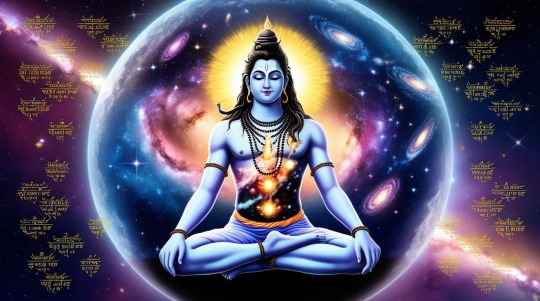
You are not in the universe. You are the universe, localized for the experience of remembering itself.
This isn’t poetic mysticism—it’s the fiery truth Vasugupta ignites through the Shiva Sutras. He doesn’t guide you toward God; he blinds you with your own forgotten radiance. In the realm of Kashmiri Shaivism, the Absolute isn’t a peak to be climbed, but a vast sky that’s been within your breath all along.
The universe, according to Vasugupta, is not external. It is a projection of universal consciousness—Chit. And your essence is not a part of this consciousness. It is consciousness itself, playing hide-and-seek behind the veil of identity.
🌌 The Universe Isn’t a Place. It’s a You Wearing a Costume.
While most traditions separate the creator and creation, Vasugupta erases the line. The Absolute isn’t above or beyond—it is embedded in every flicker of experience. To realize this is not to attain something new, but to wake up from the trance of separation.
Imagine you are a wave that has forgotten it is the ocean. You meditate, you chant, you seek the ocean… never realizing that you already ARE it. The Shiva Sutras wake the wave up with a jolt: “You are not on the path to the Divine—you are the Divine on a pathless journey.”
The Absolute isn’t hidden—it is this very moment, stripped of labeling, resistance, and conceptualization. It is the non-dual essence that sees through your eyes, breathes through your body, and waits patiently behind your thoughts.
🔮 Self-Recognition Is Cosmic Recognition
In the Pratyabhijna school of Kashmiri Shaivism, self-recognition IS liberation. It’s not knowledge about the Self—it’s becoming the knowing itself. You don’t unite with the universe—you awaken to the absurdity that you ever thought you were separate from it.
In this philosophy, to know oneself is to know everything, because everything is a reflection of the same luminous Source.
🛠️ Practical Toolkit: Realizing Unity with the Universe (Without Leaving Your Living Room)
1. The Mirror of All Things As you encounter people, events, objects—silently ask: 🪞 “How is this me, disguised?” Recognize the Absolute peeking back through every form.
2. Sound into Silence (Daily Ritual) Use the fading sound of a bell or mantra. As it fades, close your eyes and ask: Who is aware of this silence? Rest in the one who listens—not the sound.
3. Cosmic Micro-Actions Before any daily act—like brushing your teeth or tying your shoes—pause and mentally declare: 🌌 “This, too, is the universe expressing itself.” Bring reverence into the routine.
4. Absolute Gratitude Once a day, express gratitude—not for things, but for being aware of being. Gratitude without an object dissolves ego boundaries.
5. Starfield Meditation (Night Practice) Stare at the night sky or close your eyes and imagine it. Say: 🪐 “I am not in the universe. The universe is in me.” Feel your awareness stretch into infinity.
🌠 Final Reflection: You Were Never a Fragment
Vasugupta’s path is not an escape to the stars—it’s a realization that the stars have always been shining from within. He doesn’t offer a stairway to God. He offers the shock of divine déjà vu.
The truth is radical, stunning, and beautifully inconvenient: 🌌 You are not separate. You are That. Now… live like it.
#ShivaSutras#KashmiriShaivism#Vasugupta#NonDualSpirituality#YouAreTheUniverse#SpiritualAwakening#UniversalConsciousness#DivineAwareness#Pratyabhijna#AbsoluteReality#LiveAsShiva#SacredUnity#OnenessPath#SelfRealizationJourney#InnerCosmos
0 notes
Text
The Origin of Alphabets from Shiva Sutra Sounds: Exploring the Matrika Chakra
Introduction:Origin of Alphabets:
The origin of alphabets has always been a topic of fascination and intrigue for linguists, historians, and philosophers alike. From ancient civilizations like Egypt and Mesopotamia to the modern digital age, alphabets have been an essential part of human communication and expression. But have you ever wondered where these alphabets came from? What is their origin, and how did they evolve into the complex systems of writing and language that we use today? In this article, we will explore the fascinating origins of alphabets and their connection to the ancient Hindu texts, Puranas, and scripts. Shiva Sutras: The Shiva Sutras, also known as Maheshvara Sutras, are a set of 77 aphorisms that were first revealed to the great sage Vasugupta by Lord Shiva himself. These sutras are considered to be one of the most important texts of Kashmiri Shaivism, a school of thought that focuses on the worship of Shiva as the ultimate reality. The Shiva Sutras contain a profound insight into the nature of consciousness and the principles of spiritual practice. But what is less known is that the Shiva Sutras also contain the seed sounds of the Sanskrit language, which form the basis of the entire system of Indian alphabets. According to the ancient Hindu texts, the world was created through sound. The universe itself is said to be a manifestation of the primordial sound, OM, which represents the ultimate reality or Brahman. The sounds of the Sanskrit language are considered to be divine and have the power to create, sustain, and destroy the world. The Sanskrit alphabet, known as Devanagari, is said to have originated from the Shiva Sutras, which contain the seed sounds or bija mantras of the 50 letters of the Sanskrit alphabet. The bija mantras are the basic sounds or vibrations that form the building blocks of the universe. These sounds are said to have emerged from the cosmic nada, the primordial sound of creation, which is the sound of Lord Shiva's drum. The Shiva Sutras contain the 50 bija mantras that represent the basic sounds of the Sanskrit language. These mantras are the sounds of the Sanskrit consonants and vowels, which form the basis of the Sanskrit language. The 50 bija mantras of the Shiva Sutras are arranged in a specific order, which is called the matrika chakra. The matrika chakra is a circular arrangement of the bija mantras, which represents the cosmic manifestation of the universe. The matrika chakra is said to have originated from the cosmic sound of Lord Shiva's drum, which represents the primordial sound of creation. The matrika chakra consists of five groups of sounds, each containing ten bija mantras. The first group represents the five basic elements of the universe, which are earth, water, fire, air, and ether. The second group represents the five organs of perception, which are the eyes, ears, nose, tongue, and skin. The third group represents the five organs of action, which are the hands, feet, mouth, genitals, and anus. The fourth group represents the five states of consciousness, which are waking, dreaming, deep sleep, turiya (transcendental), and turiyatita (beyond transcendental). The fifth group represents the four levels of speech, which are para (ultimate), pashyanti (inner), madhyama (middle), and vaikhari (outer).
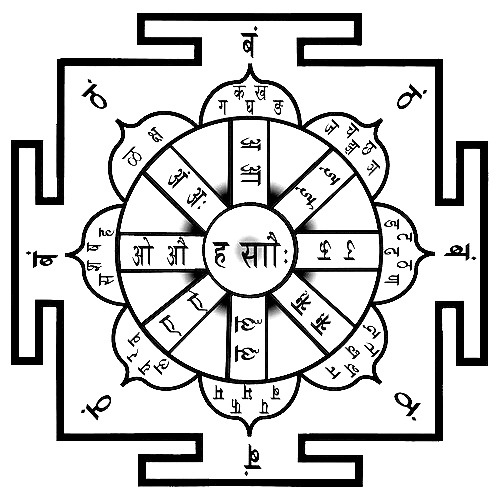
The matrika chakra is not just a system of sounds but also a system of knowledge. It represents the fundamental principles of the universe, which are also reflected in the human body and mind. The Shiva Sutras and the matrika chakra have been an important part of Hindu philosophy and spirituality for centuries. They teach us that everything in the universe is interconnected, and that by understanding the fundamental principles of the universe, we can better understand ourselves and our place in the world. In conclusion, the origin of alphabets from Shiva Sutra sounds is a fascinating concept that holds immense importance in the Hindu tradition. The sounds were considered divine, and they were believed to contain the essence of the universe. The Rishis recognized the potential of these sounds and used them to create a system of communication that has endured for thousands of years. The Shiva Sutras continue to inspire spiritual seekers, linguists, and scholars alike, and their relevance remains undiminished even in the modern age. Understanding the connection between these ancient sounds and the letters we use to communicate every day can help us appreciate the profound wisdom that underpins the Hindu tradition.
Conclusion:
It is essential to recognize the critical role of Shiva Sutras in the origin of alphabets and how they continue to influence language and communication. The study of Sanskrit, in particular, can help deepen our understanding of this connection and provide us with a window into the rich cultural heritage of India. By recognizing the importance of the sounds that gave birth to our letters, we can learn to appreciate the beauty and depth of the Hindu tradition. References: - Vasugupta, Kshemaraja, Jaideva Singh, and Paul E. Muller-Ortega. Shiva Sutras: The Supreme Awakening. Motilal Banarsidass Publ., 2008. - Saraswati, Swami Satyananda. Shiva Sutras: The Yoga of Supreme Identity. Bihar School of Yoga, 2012. - Ranganath, B. G. V. Indian Writing in English. Atlantic Publishers & Dist, 2007. - Gupta, Shailendra K. The Origin of Language: A Scientific Approach. Academic Press, 2010. - Deussen, Paul. The Philosophy of the Upanishads. Courier Corporation, 2013. - Baskaran, S. The Book of Indian Scripts: A Brief History of Writing in India. New Delhi: National Book Trust, India, 2004. - Pingree, David. The Yavanajātaka of Sphujidhvaja. Cambridge, MA: Harvard University Press, 1978. - Chatterjee, S. K. The Origin and Development of the Bengali Language. Calcutta: Firma K. L. Mukhopadhyay, 1970. - Apte, Vaman Shivaram. The Practical Sanskrit-English Dictionary. Delhi: Motilal Banarsidass, 1993. - Macdonell, Arthur Anthony. A Sanskrit Grammar for Students. Oxford: Clarendon Press, 1916. Read the full article
#AdikkaChannels#AdikkaChannelsblog#Alphabets#brahmadeity#consciousness#Hindumythology#Hinduphilosophy#lordshivagod#MatrikaChakra#shivagod#ShivaSutras#SoundVibration#spirituality
0 notes
Quote
Mediante la conquista de lo ilusorio, se alcanza la realización suprema.
Shivasutras
7 notes
·
View notes
Text
"Where the Divine and the World Collide: Vasugupta’s Insights"

What if the divine wasn’t some distant mountaintop truth, but the pulse of your ordinary life—the honk of a rickshaw, the warmth of your chai, the ache in your back? Vasugupta, the 9th-century Kashmiri sage who received the Shiva Sutras in a flash of divine revelation, dared to erase the ancient line between the sacred and the mundane. In his world, there was no elsewhere to seek God—because God was seeking you through your own awareness.
In Kashmiri Shaivism, Vasugupta shatters the duality between prakriti (nature) and purusha (pure consciousness). He doesn't ask us to reject the world to find the divine; he asks us to dive into it more consciously. Life is not a distraction from God—it is God, disguised as breath, traffic, heartbreak, spreadsheets, children’s laughter, and laundry.
Most spiritual seekers fall into two traps: escapism or effort. Some escape to caves and silence. Others strive endlessly, thinking awakening is a goal to be achieved. Vasugupta's Sutras say neither is required. The collision point between Shiva (pure awareness) and Shakti (dynamic expression) is this moment—right now.
🌌 A Divergent Perspective: The Divine Is Not an Escape—It’s an Encounter
You don’t need to meditate your way out of chaos. You need to wake up within it.
The Shiva Sutras remind us: "Jñānam bandhah" – Knowledge itself can be bondage if it creates separation. When you label something as “not spiritual,” you exile the divine. But when you meet every moment as Shiva-Shakti in play, suddenly your very life becomes a sacred text.
Imagine awareness not as a spotlight you turn on during yoga—but as the electricity behind everything. Washing dishes? That’s consciousness in action. Arguing with your boss? Also Shiva, appearing as friction. When you stop dividing the world into “holy” and “profane,” you begin to live the Sutras—not study them.
🛠️ Practical Toolkit: Merging the Divine with the Daily
3 Breaths of Awareness Practice Before opening your phone, pause. Take 3 deep, conscious breaths. Whisper mentally: “This moment is Shiva.” Reclaim your day.
Sacred Disruption Technique Set random alarms labelled “Wake to Wonder.” When it rings, drop into silence—observe your surroundings as manifestations of divine play.
The Shiva Gaze (Drishti of the Witness) When triggered, don’t react. Instead, observe the emotion, the trigger, and the self simultaneously. Watch without fixing. This is Pratyabhijna—recognizing the Self.
Shakti Journal Prompt (Nightly) Write: “Where did I miss the divine in my day?” and “Where did I feel merged with something greater?” Recalibrate your lens.
The Collision Blessing Each time you experience difficulty—say: “This is the divine meeting me, not defeating me.” Turn reaction into reverence.
Vasugupta didn't leave us with commandments. He gave us whispers—sutras—that break open the illusion of separation. His legacy is not a religion, but a realization: There is no other place to find God. God has already found you, as you.
#ShivaSutras#KashmiriShaivism#VasuguptaWisdom#SacredAwareness#SpiritualAwakening#DivineWithin#NonDualSpirituality#ModernMystic#SpiritualIndia#ShivaShaktiUnion#LivingConsciously#EverydayEnlightenment#PratyabhijnaPath#AwarenessIsKey#SacredInTheOrdinary
0 notes
Text
The Shiva Sutras: A Roadmap to Self-Realization

Vasugupta didn’t write for those seeking comfort—he wrote for those ready to shatter illusions.
The Shiva Sutras, unlike most spiritual texts, are not about rules or rewards. They are lightning bolts aimed at awakening. They don’t invite you to be better; they remind you that you already are pure Awareness, veiled only by the drama of your mind.
In the labyrinth of today’s spiritual market—where techniques abound and enlightenment feels like a subscription model—Vasugupta’s voice roars like Shiva’s drum: You are not broken. You are the eternal observer pretending to be a seeker.
🌀 From Map to Mirror
Calling the Shiva Sutras a “roadmap” is poetic irony—because they ultimately reveal that you are both the road and the destination. There is no distance between you and the Divine. The journey is not about becoming but unbecoming. What remains? Shiva. Awareness. You.
Where other paths encourage effort, Vasugupta’s insight whispers surrender. Not to the world, but to your own presence, your spanda—the sacred vibration that animates everything. The Shiva Sutras don’t lead you out of life; they pull you deeper into it, until all that remains is Unity disguised as diversity.
🔮 Divergent Take: Liberation Is the Most Natural Thing
Spirituality often appears as an elite club—silent retreats, mantras, and the right incense. Vasugupta dissolves this. For him, Self-realization is your default setting. The only reason you’re not experiencing it is because you’ve believed the software of conditioning and ego.
You don’t have to climb the Himalayas. You just have to remember who’s watching the climb.
🛠️ Toolkit for Daily Self-Realization (No Robes Required)
Here’s how to live the Shiva Sutras—not read them.
1. The Observer Check-In (3x a day) Pause. Inhale. Ask yourself: 🌀 “Who is observing this moment?” Feel that Presence. That’s Shiva—your true self. Start living from that observer instead of the reactor.
2. The Spanda Breath (5 minutes morning/night) Sit still. Focus on the inner pulse between inhale and exhale. That gap—silent yet vibrating—is spanda. It’s the primordial rhythm. Let it wash over your mind.
3. The Deconstruction Journal (Daily) Before bed, write down 3 identity labels you believed about yourself today (e.g., “I am lazy,” “I’m not spiritual enough”). Then write: 🗨️ “This is a thought, not the Seer.” You’re clearing fog from the mirror.
4. Conscious Action with No Actor (Anytime) Whatever task you’re doing—washing dishes, emailing—remind yourself: 👉 “This is happening. There’s no doer—just the doing.” Watch how the burden of identity slips away, and the joy of Being floods in.
🌌 The Shiva Sutras Are Not Philosophy. They’re Permission.
Permission to stop playing small. To stop outsourcing your truth to gurus, books, or algorithms. Vasugupta isn’t offering you a religion. He’s handing you the keys to your own divinity, hidden in plain sight beneath roles, fears, and expectations.
When you stop trying to become someone else, you remember what you are: an unchanging flame of awareness in the theater of change.
The Shiva Sutras aren’t just verses. They’re cosmic nudges, saying— 💥 “Wake up. You’re not lost. You’re pretending to be separate from what you already are.”
You don’t need more seeking. You need more Being.
#ShivaSutras#VasuguptaWisdom#KashmiriShaivism#SpiritualAwakening#SelfRealization#DivineConsciousness#NonDuality#SpandaEnergy#AwarenessPractice#MysticIndia#ShivaConsciousness#ShaivaPhilosophy#InnerObserver#EnlightenmentJourney#LiberationThroughAwareness
0 notes
Text
Stop Becoming; Start Being: Vasugupta’s Sutras of Liberation
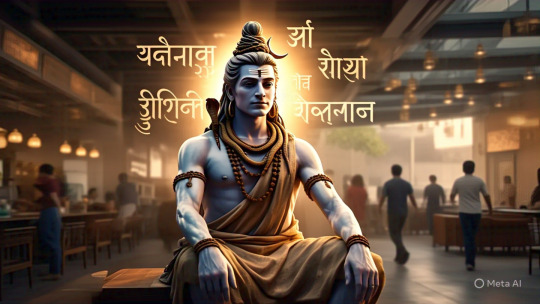
The world is obsessed with becoming—becoming successful, spiritual, enlightened, better, more. But what if the highest liberation is not in becoming anything… but in being fully, fearlessly, and freely what you already are?
This is the thunderous whisper of Vasugupta’s Shiva Sutras: “The Real is not reached through effort; it is realized through awareness.”
In a world of constant upgrades, Kashmiri Shaivism drops the ultimate truth bomb: you are not incomplete. The Self is not a seed waiting to grow into something else. It is a living flame, hidden by layers of mind-identification, cultural programming, and the addiction to self-improvement.
The Liberation Beyond Effort
Vasugupta does not deny the power of practices, but he throws a curveball at the practitioner: “Who is the doer of this practice?”
The Shiva Sutras do not guide you to "fix yourself." They reveal that the one trying to fix you is the illusion.
The more you chase becoming spiritual, the further you go from the truth. Why? Because the chaser is rooted in lack, and truth lives in completeness.
You are Shiva—not symbolically, not metaphorically. Literally. Not a part of him. Not a spark. You are the whole fire.
Becoming Is the Ego’s Disguise
Your desire to become better is the ego’s clever strategy to survive. It wants to keep moving the goalpost. It says, “You’ll be free… when you meditate more, when you chant more, when you learn more.” But Vasugupta flips the table: Freedom is not a destination. It is your starting point.
In this framework, every moment is sacred. There are no special states. No spiritual high score. No advanced yogi badge.
It is not about becoming the best version of yourself. It’s about seeing that you were never a version to begin with. You are pure Awareness.
Divergent Insight: Awareness is Not an Experience
Here’s the shocker: Awareness is not something you feel. It’s what you ARE, even when you’re not feeling spiritual.
You could be angry, jealous, bored, or scrolling through cat memes—Awareness remains untouched.
This is where Vasugupta goes nuclear on conventional spirituality: The “real you” is not found in temples or mountaintops—it’s behind your thoughts right now, watching, waiting, whispering:
“Stop becoming. Start being.”
🧰 Practical Toolkit: Embodying ‘Being’ in Daily Life
3-Second Presence Pauses Every time you reach for your phone, pause. Feel your breath. Notice the Awareness behind the impulse. Repeat: “I am already here.”
Identity Strip Journaling Write down 5 things you believe about yourself. Now cross them all out. Sit with what remains: the Observer.
Do-Nothing Minutes Schedule 3–5 minutes a day where you do absolutely nothing. No phone, no thoughts to chase. Just BE. This resets the nervous system and reconnects you to Shiva within.
Mirror Shiva Practice Stand before a mirror. Gaze deeply. Whisper: “I am That.” Watch what arises. Watch who watches what arises.
Unbecoming Mantra Silently repeat: “Not this, not that. I am.” Use this when caught in drama or overthinking.
Final Word
Spirituality isn’t an upgrade. It’s a download—of everything you’ve been running from. Vasugupta’s Sutras aren’t maps to help you arrive; they are mirrors that shatter the illusion of the journey.
Stop reaching.
Stop fixing.
Start being. Because you already are.
🕉️
#Vasugupta#ShivaSutras#KashmiriShaivism#StopBecomingStartBeing#SpiritualAwareness#YouAreTheDivine#PureConsciousness#ShaivaWisdom#SelfRealization#NonDualSpirituality#InnerLiberation#BeyondEgo#ShivaWithin#ModernMysticPath#SpiritualBreakthrough
0 notes
Text
Illumination Is Your Nature: Lessons from Kashmiri Shaivism

Vasugupta didn’t whisper spirituality; he thundered it into a slumbering world. His Shiva Sutras didn’t ask you to seek the light. They declared—you are the light. Not metaphorically, not philosophically, but ontologically.
Kashmiri Shaivism, unlike escapist spiritual doctrines, doesn’t preach detachment or retreat into renunciation. It doesn’t call this world an illusion to be abandoned. Instead, it dares to say something wild and utterly liberating: this world is your mirror and consciousness is your true name. You are the canvas, the paint, and the painter.
🔥 The Divergent Core: Not Becoming, but Realizing
The central idea of Vasugupta's teaching isn’t self-improvement—it’s self-remembrance. In a world obsessed with becoming, the Shiva Sutras invite you to unbecome everything you are not. Your nature is not shadowed by ignorance; it is only covered by layers of identification. The ego is not an enemy but a costume that forgot it's acting.
You are not walking toward light. You are the sun, temporarily fascinated by clouds.
In Vasugupta’s vision, there is no hierarchy between spirit and matter. Matter is not inert. It vibrates with Spanda—the divine throb of awareness that dances through every atom. You are not separate from it; you are the Spanda itself experiencing itself in form.
🧠 Beyond the Mind: Shiva as the Witness
Vasugupta speaks not to the mind, but to the witness behind the mind. The Shiva within is not worshipped as an external deity. He is the silent presence watching your thoughts rise and fall, desires surge and fade, emotions boil and settle. That witness? That’s you without identity. You without effort.
In Kashmiri Shaivism, this witness is not passive. It is the source of all creativity, the stillness from which manifestation bursts forth. To realize that is not to deny life—it is to live life as Shiva.
🛠️ Practical Toolkit: Illuminating Daily Life with Shaiva Awareness
To move from concept to consciousness, here’s a practical, integrative toolkit you can use daily:
1. Spanda Tuning (5 Minutes Morning Practice)
Sit still, eyes closed. Place attention on the vibration in your body—your breath, heartbeat, tingles. Don’t label. Just feel. Whisper silently: “This vibration is Shiva.”
2. Ego Check-ins (3x a Day)
Every time you feel triggered or superior/inferior, pause. Ask: “Who is feeling this? Am I the reaction or the witness of it?” You’ll feel the mask slip.
3. Radiance Recall Journal
Each night, write down one moment you felt “lit up” or fully present. This is not mood-tracking. It’s illumination-tracking. Over time, it reveals your natural glow.
4. Conscious Touchpoints
Use mundane acts—sipping tea, washing hands, scrolling your phone—as alarms to return to awareness. Infuse them with attention. Make life a moving meditation.
5. Mirror Mantra
Stand before a mirror and look into your own eyes. Say: “I am not the form. I am the light that sees the form.” Do this once daily for 21 days.
🌟 Final Word: You Are Already Lit
You don’t need to light a lamp. You are the flame. The mistake isn’t in missing the light—it’s in forgetting you’ve always been the sun trying to find itself in shadows.
Kashmiri Shaivism isn’t offering a ladder to heaven. It’s handing you a mirror and saying: “Look. You’re it.”
Let that truth burn bright.
#KashmiriShaivism#VasuguptaWisdom#ShivaSutras#YouAreDivine#SpiritualAwakening#NonDuality#LiveAsShiva#ShaivaPath#SpandaVibration#ConsciousLiving#DailySpiritualPractice#WitnessConsciousness#IlluminationWithin#ModernMystic#InnerRadiance
1 note
·
View note